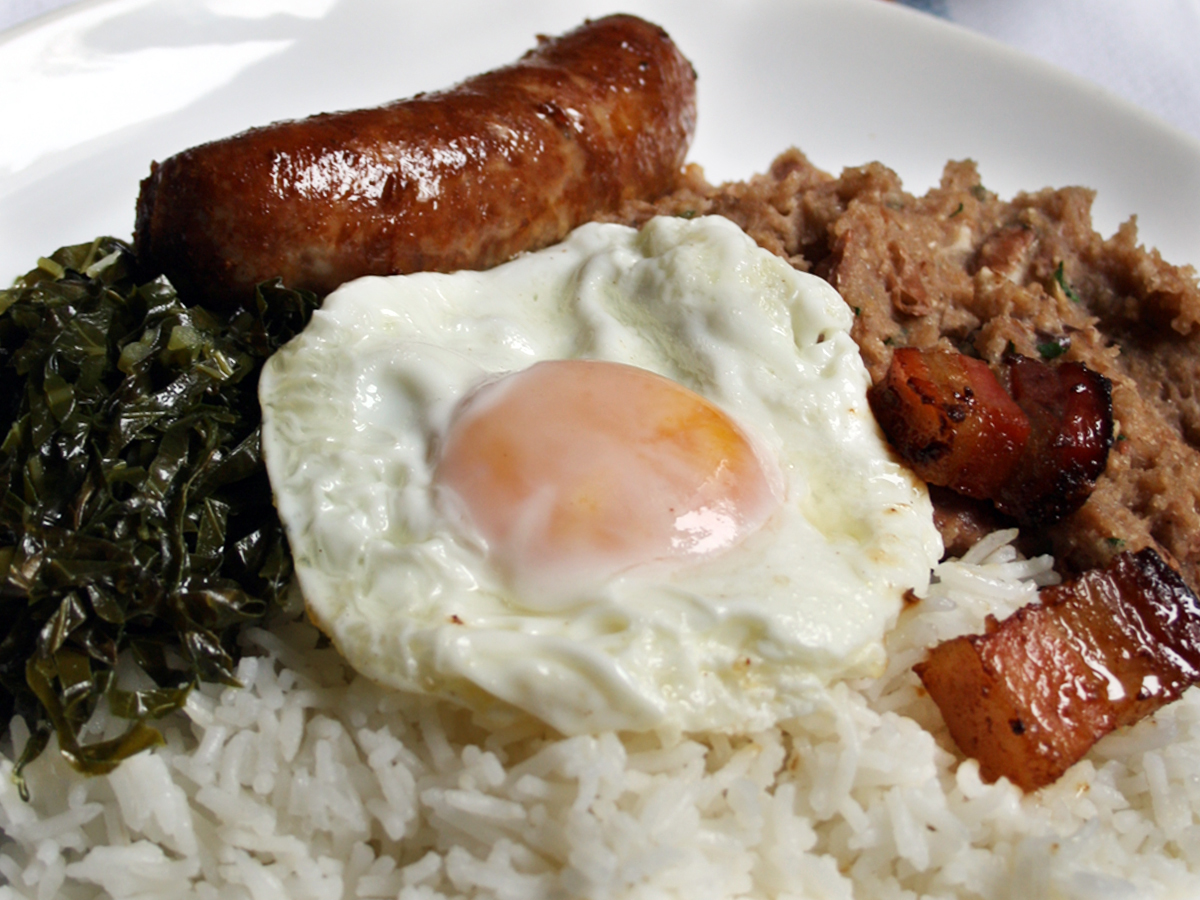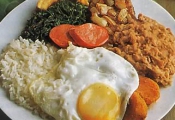Virado
virado à paulista, virado a paulista
Virado, also known as virado à Paulista, is a whole-meal dish from the state of São Paulo, Brazil. It dates to the time of the earliest Portuguese settlers to the region. The dish consists of a platter of beans cooked in sautéed onion, garlic, fat, and salt; dried, toasted manioc flour; a pork chop; fried sausage; breaded and fried plantain; eggs, preferably with the soft yolk; kale, cut into strips and braised in fat; rice; and torresmo, a crisply cooked pork rind. Virado is traditionally served on Mondays. About 500,000 plates of the dish are served per week in the city of São Paulo. Virado arose spontaneously during the early colonial period of Brazil as a dish of the bandeirantes. The bandeirantes traveled to the interior of Brazil first to capture and enslave native Brazilians, and later to find gold, silver, and diamonds. They carried beans, pork, and corn flour in their backpacks to the interior of the state. Stored in the backpack, the ingredients "turned" and mixed, hence the name of the dish, "virado". Virado in the period of the bandeirantes consisted only of beans, usually cooked without salt so as not to harden, maize flour, dried meat, and bacon. Cassava flour was substituted for corn flour after the introduction of the crop to the São Paulo region in the 18th century. The bandeirantes and other early settlers ate virado cold or warmed. The earliest written reference to virado is in 1602, when Nicolau Barreto made an expedition to present-day Paraguay, Bolivia, and Peru. It is also associated with the monção, who led expeditions by river into remote areas of the Brazilian interior from the early 18th to the early 19th century.
Source: Wikipedia






